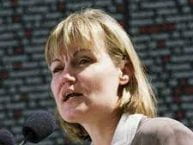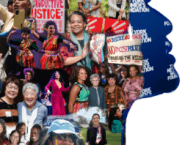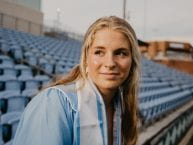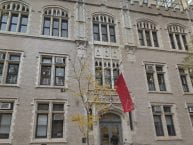My group had the honor to interview a courageous, kind, and inspiring women named Michele Gomez. Michelle lost her leg on a trip in Africa. She was in Central Africa as a peace corps volunteer, and had recently graduated from college, so she was in her early 20s. One morning during her trip Michele was riding on a motorcycle with another volunteer heading to another village. Michele recalls the day as being beautiful. “It was this beautiful day, and the sun was coming up.” This beautiful day quickly faded a few minutes later. The other volunteer was signaling to make a left turn, and that is the last thing Michele can recall, because after that the motorcycle got into an accident. Michele went unconscious while the other volunteer who broke several of her bones was still conscious, and was able to flag down a car to take Michele and herself to the hospital. When Michele was in the hospital the doctor told her that they would have to amputate her leg. Michele as most would started crying, but was eventually told by the doctor that she would still be able to dance, which was one of Michelle’s passions, and hearing this alleviated the pain, but the pain still existed not able to be fully cured.
Michele eventually returned back to the United States after recovering in the hospital, but with one leg, becoming a below the knee amputee. She moved back into her house in California and started to rebuild her life. She was hopping on crutches for a while, but was eventually given a prosthetic leg. Michele stated, “It took a while to adjust at first but pretty quickly it felt like my own leg,” after she said this she mentioned that she thinks this was because she was young and strong, which made it easier for her to get used to the leg than others.
Michele also said that there were a lot of people who loved and supported her throughout the process of recovering and rebuilding her strength and life again. She recalled, “I had all these people around me loving and supporting me.” Michele was really lucky to have such a nice group of friends and family that didn’t judge her, and helped her during everything, because many do not have that, which makes the adapting process much more difficult.
Michele told our group that she has three different legs for different occasions and activities. She has one high heel leg for parties and other events. She has one flat leg which is meant for dancing, and then she has a waterproof leg for when she swims in a pool or at the beach. Michele has to switch her legs when she goes to these different places, and does it publicly.
What struck me is what Michelle told us about what happens when children see her prosthetic leg and changing her prosthetic leg in public. She said that children sometimes come up to her and ask questions about her different prosthetic legs, and that the kids are usually not frightened but interested. She said that on the other hand the parents typically get embarrassed and tell their kids not to talk to Michele and ask questions, which actually teaches the children that Michele is different and strange, and one should stay away from her, which is in fact not true, and the opposite of what you want these kids to learn.
Michele has been a true champion in the way she has approached losing her leg and learning to function with a prosthetic leg. It makes me wonder how other people react when losing their leg because I cannot imagine that they would be as dignified and calm as Michele.
I’m grateful that we were able to interview Michele and gain more information on our topic.







